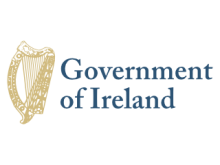Resource information
These Regulations give effect in Irish law to Directive No. 2014/89/EU of the European Parliament and of the Council establishing a framework for maritime spatial planning by establishing the necessary legal basis for the Minister to implement maritime spatial planning. The Regulations designate the Minister as the competent authority for the purposes of the Directive and provide the broad framework within which the Minister will implement maritime spatial planning. “Maritime spatial planning” means the process by which the competent authorities of Ireland duly analyse and organise human activities in marine areas to achieve ecological, economic and social objectives. When establishing and implementing maritime spatial planning, the competent authority concerned shall- for specified purposes have regard to, among other things - the economic, social and environmental aspects to support sustainable development and growth in the maritime sector and an ecosystem based approach. Specified purposes include the fisheries and aquaculture sectors and preserving, protecting and improving the environment, including resilience to climate change impacts.
Implements: Directive 2008/56/EC of the European Parliament and of the Council establishing a framework for community action in the field of marine environmental policy (Marine Strategy Framework Directive). (2008-06-17)



